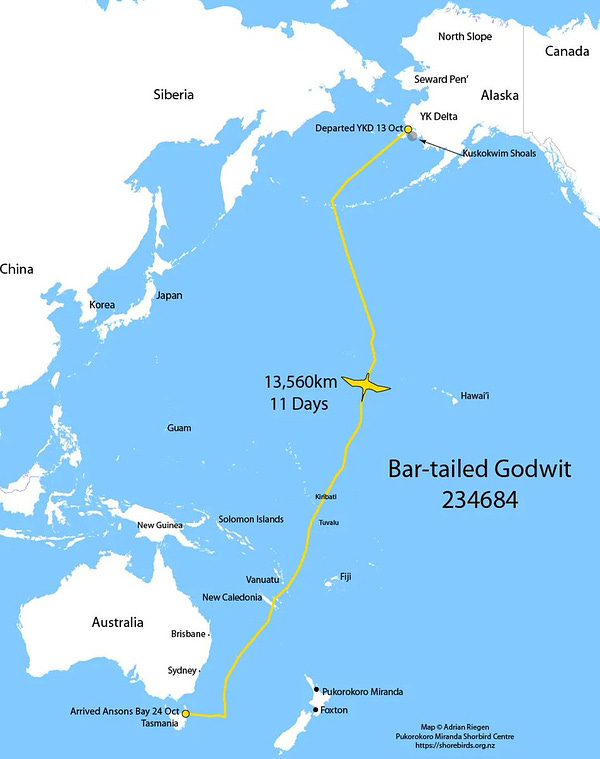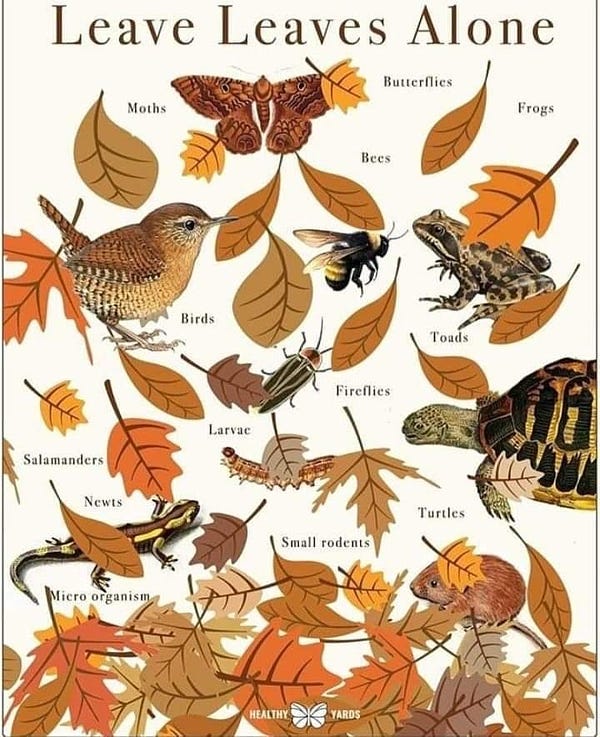

An incredible journey
The news came across last week that a young Bar-tailed Godwit, a big, noisy cinnamon-colored shorebird that breeds in the Arctic, flew nonstop from Alaska to Tasmania—8,425 miles over 11 days—breaking a record for longest known nonstop flight (set the last two years by another Bar-tailed Godwit.
Birdwatching Magazine was on the story, which originated with the USGS Alaska Science Center.
After fattening up on the Kuskokwim Delta, B6 left Alaska on October 13 and arrived in Australia on October 24. The shorebird was tracked using a 5-gram solar-powered satellite transmitter that was attached to its rump. Scientists used a U.S. Geological Survey metal band and a uniquely coded alphanumeric leg flag to uniquely identify individual birds.
“They don’t land on the water. They don’t glide,” said Dan Ruthrauff, a U.S. Geological Survey research wildlife biologist who helped tag B6. “This is flapping flight for a week and a half. It’s crazy, and I think is just tangible enough that we can appreciate it and have our minds properly blown.”
Bar-tailed Godwits are one of three godwit species found in North America. The other two—Hudsonian Godwit and Marbled Godwit—can be found in the Midwest during migration. Bar-tailed Godwits are birds of the Old World, with a population that crosses the Bering Strait to breed in the 49th state.
Shorebirds in general are among our most prolific migrants. Another regular visitor to Illinois—the Red Knot—flies between the Canadian Arctic and southern Chile. Arctic Terns are the long-distance champion migrants, zigzagging their way south from Greenland to Antarctica. There are only a handful of Arctic Tern records in Illinois during the past few decades.
As astonishing as this godwit’s feat is, let’s hope it helps a few more people understand the importance of wetland habitat for this oft-overlooked family of birds. From the Birdwatching story:
As their name implies, shorebirds are intimately linked to shorelines and wetlands, a fact that potentially heightens their vulnerability to climate-related effects attributable to rising seas and diminished wetland functions. Shorebirds rely on interconnected networks of functional ecosystems at sites that often are located thousands of miles apart around the world.
Turning over new leaves
It’s that time of year again—leaf-raking season. Or is it?
We’ve discussed in this space before what to do with all these leaves every autumn. The debate sparks emotions on all sides. There are the devotees of gas-powered leaf blowers, there are the electric blowers, the old-fashioned rakers, and the “leave the leaves” crowd. In Evanston, gas-powered leaf blowers will be phased out by April 2023.
Last week, I watched as a neighbor used a gas-powered leaf blower to blow all the leaves off his yard and into the nearest forest preserve. Then he mowed the grass and edged along the sidewalks. His lawn looks tidy and immaculate, bright green against the golds of fall, worthy of an old English estate or a luxurious country club. At least the leaves didn’t get bagged up and hauled off to a landfill, but what really has been accomplished here?
Then something really surprising happened on Thursday evening, when another neighbor piled his leaves along the curb and lit them on fire! Again, the leaves didn’t get hauled off to a landfill, but they weren’t allowed to decompose and return to the earth either. Then there’s the safety hazard of a brushfire in the middle of a Chicago neighborhood.
I’m sticking to my raking approach this year, clearing the sidewalks of leaves to ensure safe passage and depositing the excess into garden beds. We aren’t keeping up with the Joneses, but we are leaving space for all sorts of critters and a healthier lawn overall. It might not seem like much, but it does add up, especially when considering the global decline of insects.
Parting shot

If you like this post, you also might like…







Very surprised to hear that your neighbor was burning leaves at the curb. I grew up in Chicago in the 1960's and remember the smell of burning leaves in the fall, but I'm pretty sure this practice was banned at some point!
“After fattening up on the Kuskokwim Delta, B6 left Alaska on October 13 and arrived in Australia on October 24.” you write - as ever - beautifully succinctly. What a treat to see this story come across your desk (how could it not! Everyone’s going mad for it, including our most recent tweet) and I’m so glad you have reshared it into your own wonderfully pithy language.